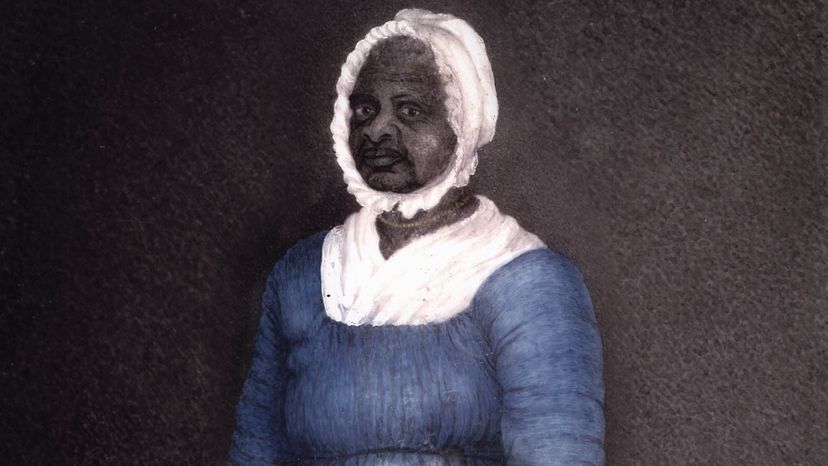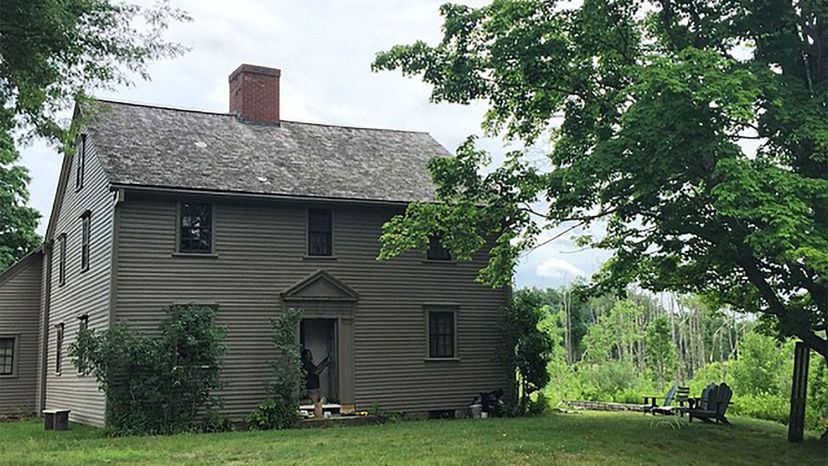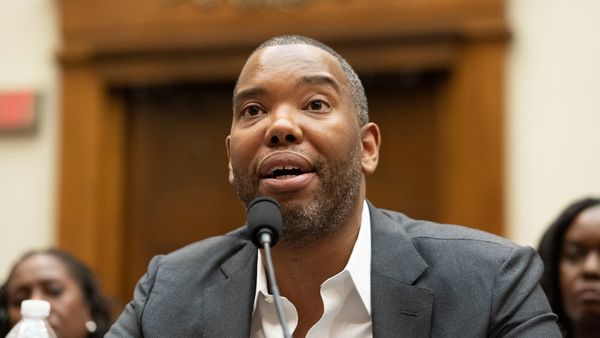
A Revolutionary War-era court case that granted an enslaved woman freedom from her cruel enslavers. A benevolent white lawyer turned employer. A name change at a crucial turning point. These are all moments in Elizabeth Freeman's life. Her story — or at least what we know of it — reads like a tale of grit and justice that's ripe for Hollywood dramatization. But, in reality, the circumstances of Freeman's triumph were rooted in necessity and survival.
Freeman — called Bett before she chose her new moniker — was born into slavery on an unknown date in the 1740s. By either inheritance or purchase, Freeman was enslaved as a child by Colonel John Ashley and his wife, Hannah. At the Ashley house in Sheffield, Massachusetts, Freeman did domestic work, served visitors and dealt with the reported brutality of Hannah Ashley.
Advertisement
But by 1780, Freeman had become aware that documents like the Declaration of Independence and Massachusetts Constitution espoused the ideas of freedom and equality as birthrights. Freeman determined that she, too, was entitled to freedom by law. In the wake of other enslaved Black people and abolitionists who took their claims to court, Freeman decided to sue for her freedom. She had the help of lawyers Theodore Sedgwick and Tapping Reeve to do so.
This wasn't a common course of action. Some enslaved people weren't aware that they could petition for their freedom and win, nor did they have the resources to do so. On top of that, challenging the law and one's enslavers could be risky and futile. However, freedom suits, or instances when enslaved people filed lawsuits against their enslavers to gain their freedom, weren't unprecedented in colonial times. Many of these suits were brought by men, and many of the claimants challenged the legitimacy of their own enslavement rather than the entire institution of slavery. For instance, Elizabeth Key sued for her freedom in Virginia in 1656 on the basis that her father was a free white man and she was a Christian, conditions that entitled her to freedom by English common law.
L'Merchie Frazier — an artist, educator, and director of education and interpretation at the Museum of African American History, Boston and Nantucket — speaks about the many reasons for enslaved people petitioning for freedom and about their awareness of the ability to do so. "Maybe [the enslaved petitioners] haven't been manumitted [set free] when their contract says they should be manumitted," says Frazier. "Maybe they should be, at this point in time, earning wages for their service. There are distinct differences in cases where petitions are brought, but they are not without the knowledge that they exist. They're not existing in a vacuum." Some enslaved people found ways to organize to win their freedom, she says.
Freeman asserted that she was free according to the rules that American politicians enshrined in governing documents. Catharine Maria Sedgwick, the daughter of lawyer Theodore Sedgwick, later wrote about Freeman's convictions. Sedgwick quoted Freeman: "I am not a dumb critter, won't the law give me my freedom?" Sedgwick went on to say about Freeman, "I can imagine her upright form as she stood dilating with her fresh hope based on the declaration of her intrinsic inalienable right." Freeman helped raise Catharine Sedgwick, and Catharine's records of the life of her beloved "Mumbet" have provided historians more information about Freeman's history than they would have had otherwise.

Freedom suits were often unsuccessful, resulting in neither the emancipation of the plaintiff nor the abolition of slavery in the place where the case was brought. But some, including Brom and Bett v. Ashley, were stories of liberation. Freeman's lawyers decided to add Brom, one of four other enslaved people at the Ashley estate, to the suit. Freeman may have sought the help of Theodore Sedgwick since he visited the Ashley house, or Sedgwick and Tapping Reeve may have pursued Freeman and Brom in order to test whether slavery was legal in Massachusetts under the new state constitution.
Either way, Sedgwick got a writ of replevin, which is an order authorizing the retaking of property by its rightful owner, from the court ordering John Ashley to release Freeman and Brom because they were not his property. He refused to release them and was ordered to appear in court. On Aug. 21, 1781, Sedgwick and Reeve argued before the Court of Common Pleas in Great Barrington that slavery was unconstitutional, since the Massachusetts Constitution stated that "all men are born free and equal." The next day, the jury determined that Brom and Freeman should be emancipated. The two were awarded 30 shillings in damages, and Ashley had to pay 5 pounds, 14 shillings, and 4 pence in court costs. Upon her victory, Freeman took her new name, an assertion of her newfound independence.
The outcome of Freeman's case, and the cases of an enslaved man named Quock Walker who won his freedom in 1781, showed that the legal (and moral) foundations of the institution of slavery were disintegrating. These cases marked the beginning of the end of slavery in Massachusetts — according to the 1790 census, no enslaved people lived in the state. That said, the state constitution was not amended to outlaw slavery, and people remained in bondage as chattel slavery became obsolete in Massachusetts.
Freeman went on to work for the Sedgwicks, providing her services in the household and community as a servant, midwife and governess. In a reversal almost too improbable for a third act, Freeman became one of the first women in Massachusetts to own property. She bought a home and land of her own, amassing enough wealth and property to create a will a couple of months before she died in December 1829. The items she owned and chose to pass down — shawls, gowns, earrings, quilts, spoons and gold beads, among other objects — tell a story about her character and what she valued, despite the lack of first-person accounts of Freeman's life.
"As we see her life unfolded in the ways that are accessible to us," says Frazier, "we find a woman who is not deterred from her honesty, her truth and her will to be free."
Advertisement


